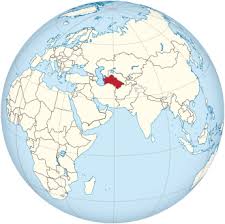An Insight into Turkmenistan: Economy, Culture, and Challenges

Introduction
Turkmenistan, a country in Central Asia bordered by the Caspian Sea, is often overlooked on the global stage. However, the importance of Turkmenistan is growing, particularly given its rich natural gas reserves and strategic geographical position. Understanding Turkmenistan’s political, economic, and cultural landscape is essential, not only for those interested in Central Asian affairs but also for global energy markets and geopolitical strategies.
Economy and Natural Resources
Turkmenistan possesses one of the largest natural gas reserves in the world, estimated at over 17 trillion cubic meters. The country’s economy is heavily reliant on this energy sector, with over 90% of its exports accounted for by petroleum and natural gas. In recent years, the government has pursued initiatives to attract foreign investment and diversify the economy, with projects in agriculture and textiles also gaining this attention.
Political Landscape
The nation’s political environment is characterized by a one-party system led by the Democratic Party of Turkmenistan. President Serdar Berdimuhamedow, who succeeded his father in March 2022, continues to maintain tight control over political dissent. Transparency International’s Corruption Perceptions Index ranks Turkmenistan poorly, reflecting ongoing concerns regarding governance and human rights.
Cultural Heritage
Turkmenistan boasts a rich cultural heritage rooted in ancient civilizations. The capital, Ashgabat, features unique architectural designs, such as the impressive Independence Monument and the Turkmenistan Tower. Traditional crafts, particularly carpet weaving and gold embroidery, are also significant to the national identity. Despite its authoritarian government, cultural events such as the Horse Festival celebrate the nation’s history and customs, showcasing the Ahal-Teke horses, which are regarded as a national treasure.
Current Challenges
Despite its potential, Turkmenistan faces numerous challenges, including economic dependence on fossil fuels, a need for infrastructural improvements, and issues related to civil rights. The COVID-19 pandemic highlighted weaknesses in the healthcare system, which the government is struggling to address. Additionally, engaging international partners and integrating more fully into the global economy remain significant hurdles for the state.
Conclusion
As Turkmenistan navigates its path forward, its rich resources could lead to a brighter future if managed wisely. The convergence of its economic potential and the pressing need for political reform paints a complex picture for this Central Asian nation. Observers and investors alike should closely watch how Turkmenistan evolves in a rapidly shifting landscape, which could ultimately impact the broader region.









